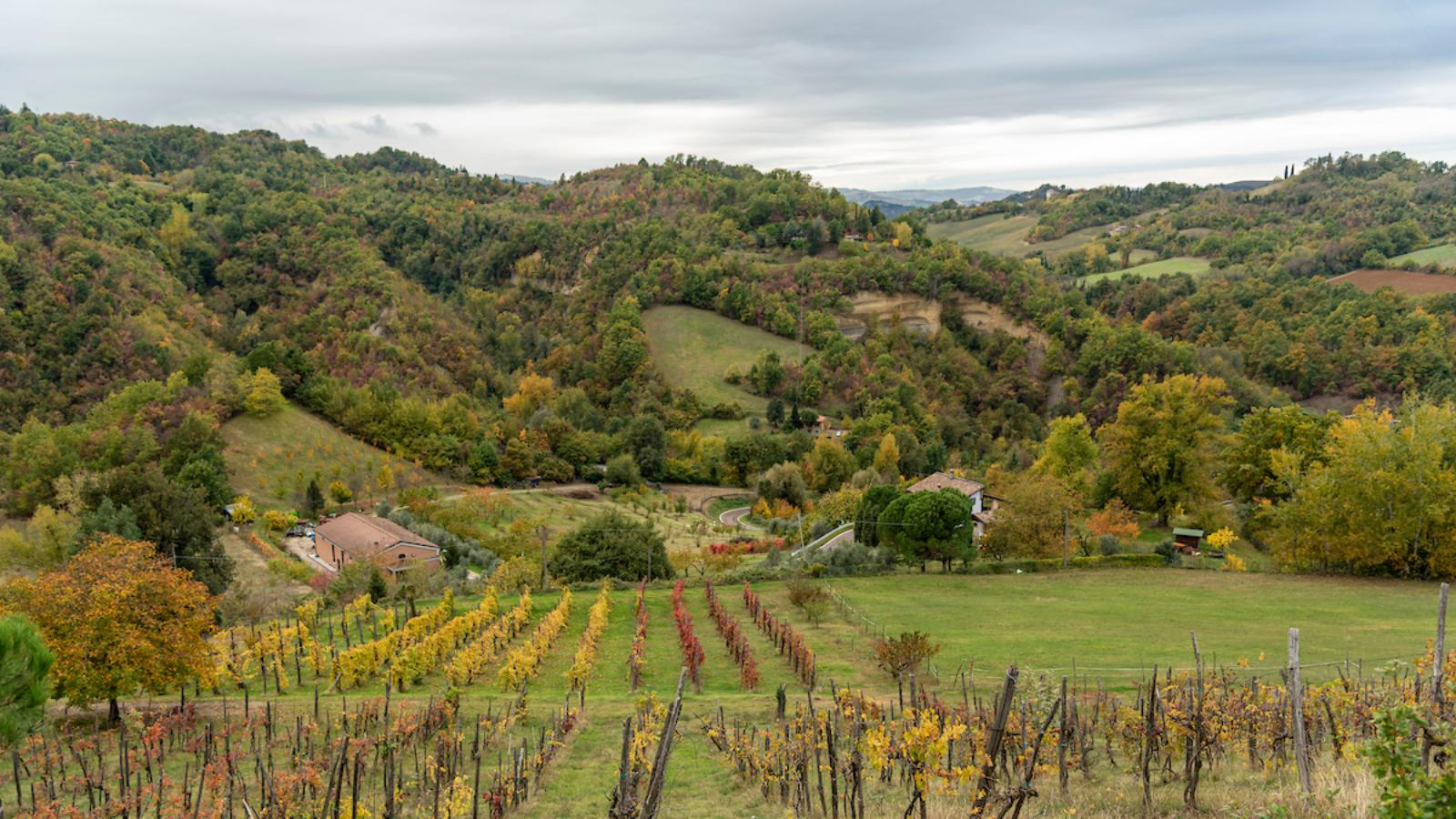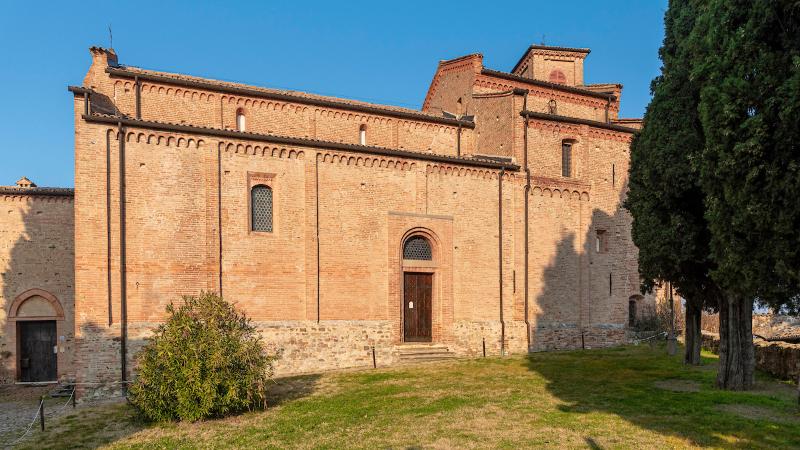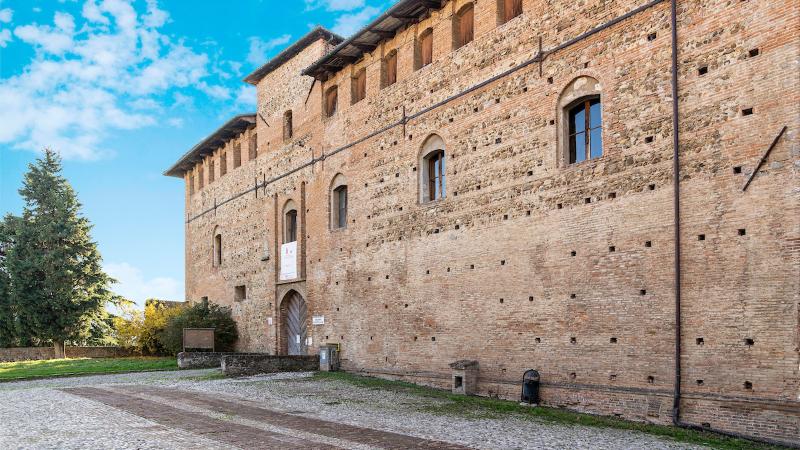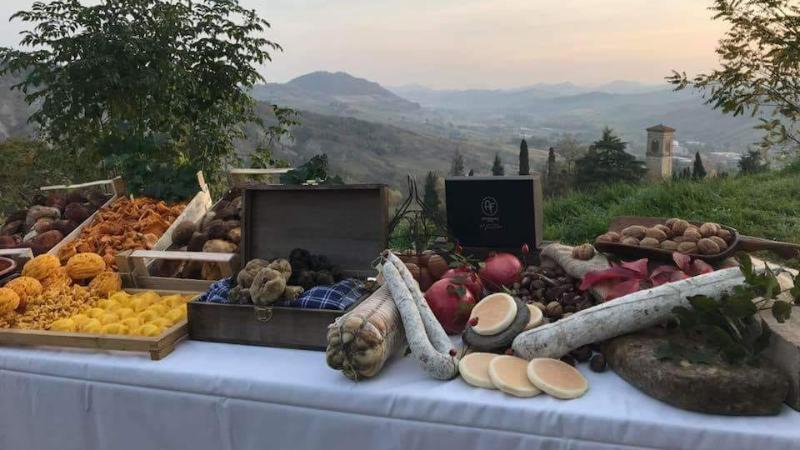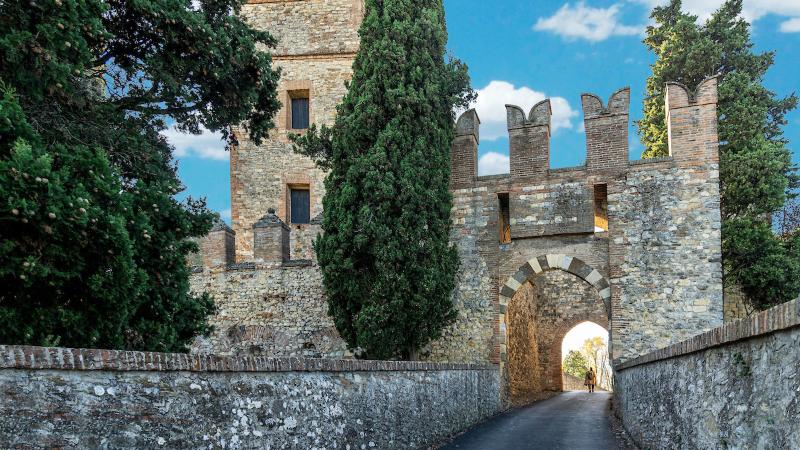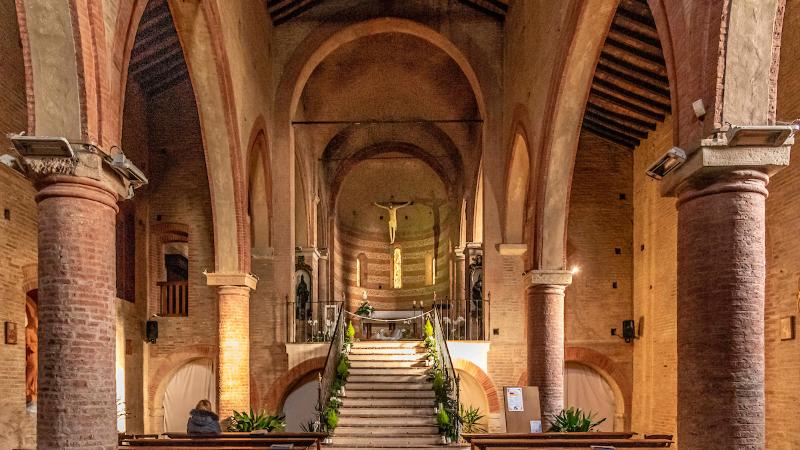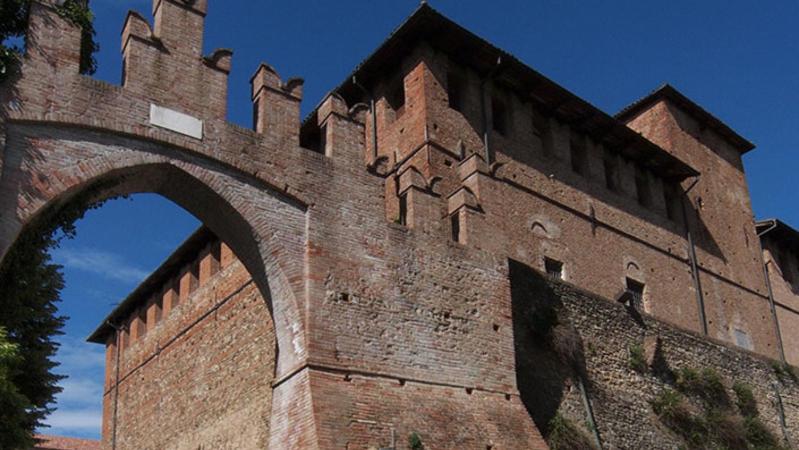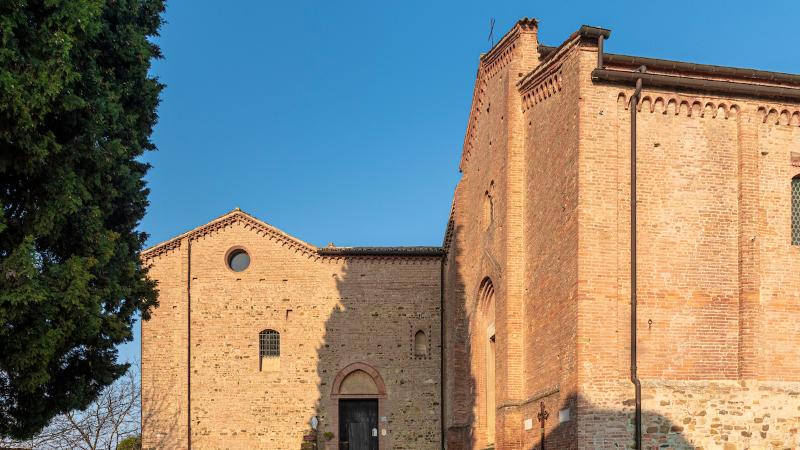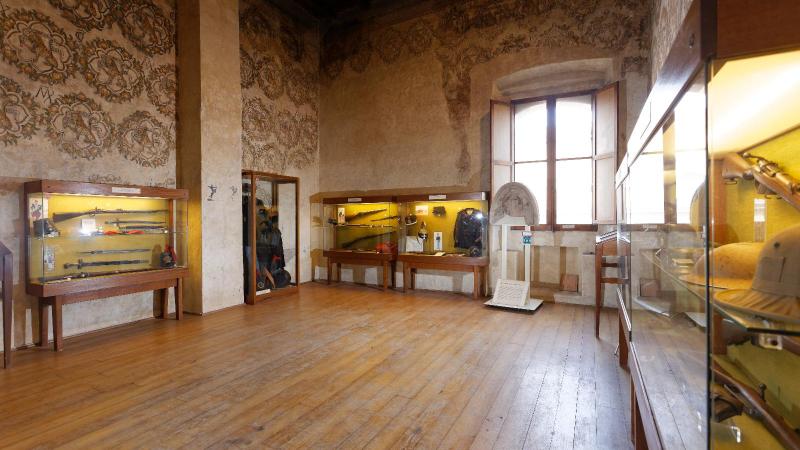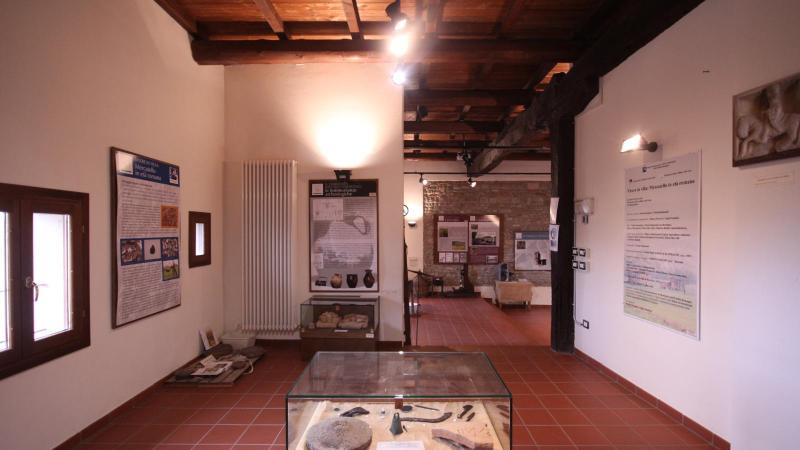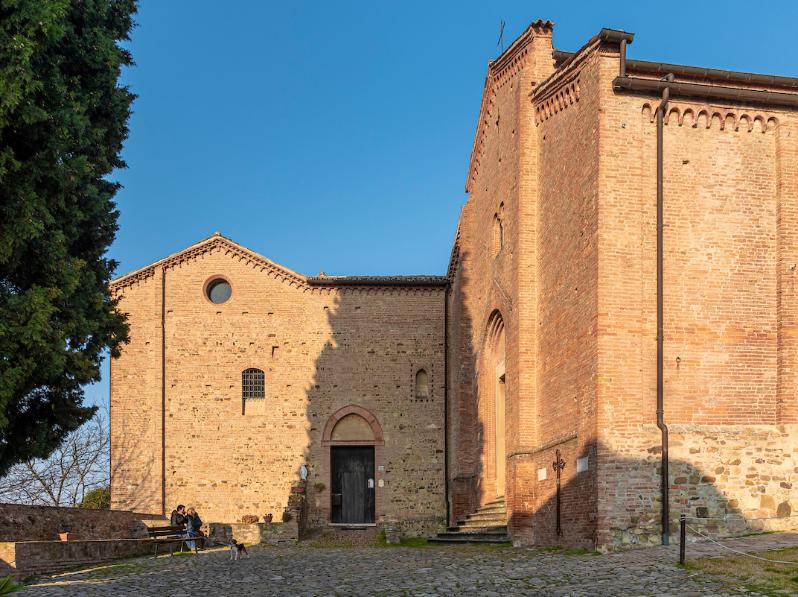
From the merger of the municipalities of Bazzano, Castello di Serravalle, Crespellano, Monteveglio and Savigno was born the municipality of Valsamoggia, nestled in the rolling hills of Emilia just a stone's throw from the border with Modena.
The Abbazia di Monteveglio’s regional Park is one of the most characteristic sites in the territory: a protected area of remarkable beauty where you will find an ancient medieval hamlet, dominated by the historic 12th-century abbey and crisscrossed by old paths, long trails and pilgrimage routes such as the Piccola Cassia and the Via dei Brentatori. While walking in the park, it is possible to admire the spectacular morphology of the badlands, geological formations that furrow the slopes of the Regional Park. A short distance from Monteveglio is Oliveto, an ancient village in an elevated position above the surrounding hills, cultivated with vineyards.
In Bazzano, on the other hand, stands the Rocca dei Bentivoglio, an imposing structure that dominates the town from the top of the hill, originally built at the behest of Matilde di Canossa. Its current form dates back to 1473 when it became one of the properties of the Bentivoglio family, the lords of Bologna at the time.
Inside the fortress you can visit the ancient halls, including the Sala dei Giganti, which features an extraordinary architectural score with columns framing the landscape, the Sala del Camino, and the striking Sala dei Ghepardi. The second floor of the fortress houses the "A. Crespellani" Archaeological Museum, which includes a section with Bronze and Iron Age materials from the necropolises of Bazzano.
The surrounding countryside is famous for the production of cherries and saslà grapes, a Slow Food presidium, from which Chasselas wine is made. Adjacent to the fortress stands the church of San Francesco, renovated in the 18th century.
The fortified village of Castello di Serravalle is steeped in history and still retains all its charm. The ancient fortification that gives the village its name stands on the heights surrounding the area. In the center there is a tower, which rises above the stately home entirely built in terracotta, with 18th-century typical forms. Here you can visit the Ecomuseum of the Hill and Wine, which offers a comprehensive overview of the activities carried out by residents, past and present.
The territory of Crespellano has been inhabited since prehistoric times, as evidenced by the terramaric and Paleolithic finds unearthed since the 17th century by Giovanni Gozzadini. The town is situated on a property, the Fundum Crispinianum, which the Roman general Crispinus received as a reward at the end of his military career. Another evidence of Roman times is the presence of the two consular roads, the Via Emilia and the Via Claudia, main links between Bologna and Modena. In the 17th century, Crespellano became the place where Bologna's leading senatorial families built elegant villas that became their country residences.
A mandatory stop for high-quality food lovers, Savigno is renowned for its truffles and in general for its excellent Emilian cuisine based on the great quality of local products. Often called the "City of Truffles," Savigno is considered the "Regional capital of the Precious White Truffle of the Bolognese Hills." Suffice it to say that out of a population of 2,500 inhabitants, as many as 130 are truffle hunters in search of the precious product that ends up on restaurant tables and in food and wine stores. Just a few kilometers from the center of Savigno lies the municipal truffle ground "Le Vigne", a place of knowledge and hands-on experience, where you can discover the world of truffles and their profound connection to the local area. Here, a tradition recognized by UNESCO as an Intangible Cultural Heritage of Humanity in 2021 comes to life: "Truffle Hunting and Digging: Traditional Practices in Italy." The ground can be reached via trail number 8 of the "Truffle Routes" starting from Savigno, and immersive truffle-digging activities are often organized here.
The Tartòfla truffle fest is the right occasion to taste the delicious truffle, a festival all about celebrating the tasty product of the woods! But it is not only gastronomy that makes Savigno interesting. In the center of the town, particularly in the main square, stands the small but charming church of San Matteo, built on a spot where an oratory dedicated to San Matteo del Mercato di Savigno has existed since the 18th century, when the town was called by that name. In front of the church towers an obelisk commemorating the uprisings of 1843, when patriots following Mazzini rebelled against papal rule.
The Tartòfla truffle fest is the right occasion to taste the delicious truffle, a festival all about celebrating the tasty product of the woods! But it is not only gastronomy that makes Savigno interesting. In the center of the town, particularly in the main square, stands the small but charming church of San Matteo, built on a spot where an oratory dedicated to San Matteo del Mercato di Savigno has existed since the 18th century, when the town was called by that name. In front of the church towers an obelisk commemorating the uprisings of 1843, when patriots following Mazzini rebelled against papal rule.
Near Savigno, the hamlet of Vénola offers a series of tower-houses built between the 16th and 17th centuries, exhibiting marvelous buildings.
Information
IAT diffuso (per i comuni di Valsamoggia, Zola Predosa, Casalecchio di Reno, Monte San Pietro)
Via Contessa Matilde, 10, loc. Bazzano, Valsamoggia, Bologna, Italy
Tel. +39 051 836441
Email: info@visitcollibolognesi.it
Web: visitcollibolognesi.it
Municipality
Piazza Garibaldi 1, 40053 Bazzano, Valsamoggia (BO)
Phone +39 051 836411
Email info@comune.valsamoggia.bo.it
Web www.comune.valsamoggia.bo.it


